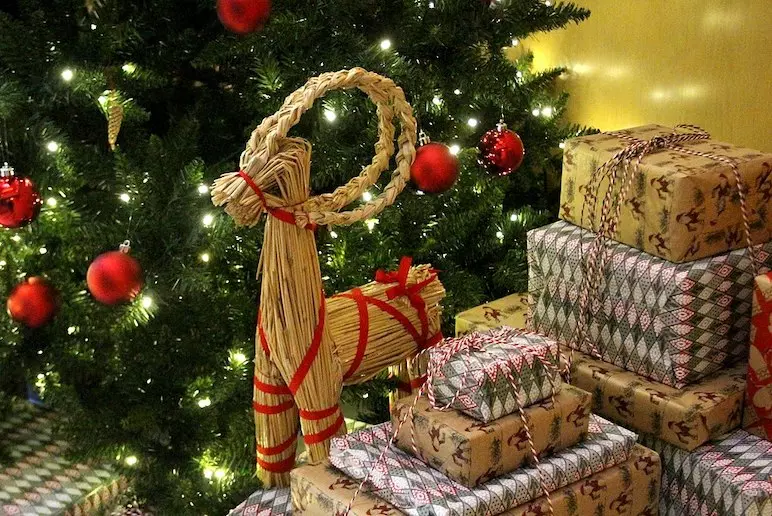A.A. Milne is best known as the author of Winnie the Pooh but he also wrote poetry, sometimes with a Christmas theme. Here is one of my favourites.
KING JOHN’S CHRISTMAS
King John was not a good man—
He had his little ways.
And sometimes no one spoke to him
For days and days and days.
And men who came across him,
When walking in the town,
Gave him a supercilious stare,
Or passed with noses in the air—
And bad King John stood dumbly there,
Blushing beneath his crown.

King John was not a good man,
And no good friends had he.
He stayed in every afternoon…
But no one came to tea.
And, round about December,
The cards upon his shelf
Which wished him lots of Christmas cheer,
And fortune in the coming year,
Were never from his near and dear,
But only from himself.

King John was not a good man,
Yet had his hopes and fears.
They’d given him no present now
For years and years and years.
But every year at Christmas,
While minstrels stood about,
Collecting tribute from the young
For all the songs they might have sung,
He stole away upstairs and hung
A hopeful stocking out.
King John was not a good man,
He lived his life aloof;
Alone he thought a message out
While climbing up the roof.
He wrote it down and propped it
Against the chimney stack:
“TO ALL AND SUNDRY—NEAR AND FAR—
F. CHRISTMAS IN PARTICULAR.”
And signed it not “Johannes R.”
But very humbly, “JACK.”

“I want some crackers,
And I want some candy;
I think a box of chocolates
Would come in handy;
I don’t mind oranges,
I do like nuts!
And I SHOULD like a pocket-knife
That really cuts.
And, oh! Father Christmas, if you love me at all,
Bring me a big, red india-rubber ball!”
King John was not a good man—
He wrote this message out,
And gat him to his room again,
Descending by the spout.
And all that night he lay there,
A prey to hopes and fears.
“I think that’s him a-coming now,”
(Anxiety bedewed his brow.)
“He’ll bring one present, anyhow—
The first I’ve had for years.”
“Forget about the crackers,
And forget about the candy;
I’m sure a box of chocolates
Would never come in handy;
I don’t like oranges,
I don’t want nuts,
And I HAVE got a pocket-knife
That almost cuts.
But, oh! Father Christmas, if you love me at all,
Bring me a big, red india-rubber ball!”
King John was not a good man—
Next morning when the sun
Rose up to tell a waiting world
That Christmas had begun,
And people seized their stockings,
And opened them with glee,
And crackers, toys and games appeared,
And lips with sticky sweets were smeared,
King John said grimly: “As I feared,
Nothing again for me!”
“I did want crackers,
And I did want candy;
I know a box of chocolates
Would come in handy;
I do love oranges,
I did want nuts.
I haven’t got a pocket-knife—
Not one that cuts.
And, oh! if Father Christmas had loved me at all,
He would have brought a big, red india-rubber ball!”
King John stood by the window,
And frowned to see below
The happy bands of boys and girls
All playing in the snow.
A while he stood there watching,
And envying them all…
When through the window big and red
There hurtled by his royal head,
And bounced and fell upon the bed,
An india-rubber ball!

AND OH, FATHER CHRISTMAS,
MY BLESSINGS ON YOU FALL
FOR BRINGING HIM
A BIG, RED,
INDIA-RUBBER
BALL!
 One of the biggest holidays in the Netherlands is December 5, the day that Sinterklaas (the Dutch version of Santa Claus) rewards all the good children with various candies and presents. Sinterklaas will ride on his horse over the rooftops, followed by his helpers and put the gifts into children’s shoes (while also removing the carrot that they left inside for his horse).
One of the biggest holidays in the Netherlands is December 5, the day that Sinterklaas (the Dutch version of Santa Claus) rewards all the good children with various candies and presents. Sinterklaas will ride on his horse over the rooftops, followed by his helpers and put the gifts into children’s shoes (while also removing the carrot that they left inside for his horse).






